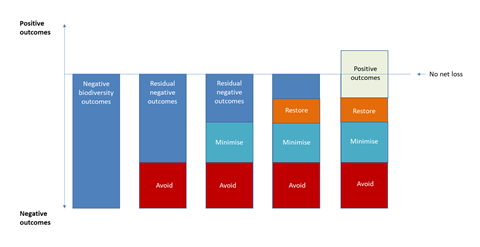Download the full discussion paper
Biodiversity loss is a systemic risk. The COVID-19 pandemic had its origins in illegal wildlife trade and habitat destruction, which brought animal disease into contact with humans.1 The likelihood of this occurring will only increase as the loss of biodiversity continues, reflecting the significance and urgent need for action by investors.
More than half of the world’s gross domestic product (US$44 trillion) is moderately or highly dependent on nature and its services – such as the provision of food, fibre and fuel – and the unprecedented loss of biodiversity places this value at risk.2
It is critical that institutional investors take action to halt the loss of biodiversity. Based on research and interviews with 11 investors, this report outlines some emerging approaches for integrating biodiversity into investment policies and strategies and highlights opportunities for investors to scale them up.
What is biodiversity?
Nature provides ecosystem services, which benefit businesses and society. The assets that underpin these services are called natural capital. Biodiversity is the variety of living components that make up natural capital. It has a role in ensuring the resilience of natural capital assets and securing them for the future. Its loss reduces the quantity, quality and resilience of ecosystem services3 and can present risks to investors across many sectors.
To date, investors have primarily focused on biodiversity loss due to acute events, including those linked to illegal activity. Less attention has been paid to how legal business activities are fundamentally reliant on biodiversity to produce goods and services, and their contribution to its decline.
Why should investors take action on biodiversity?
Biodiversity loss creates risks for society and business that can result in significant negative economic and social outcomes. Conversely, taking action against biodiversity loss offers opportunities.
Biodiversity and ecosystem service loss impacts businesses as a result of transition, physical, litigation and regulatory, and systemic risks, which have the potential to affect investment value in the short, medium and long term.
For investors, a clear understanding of the potential impact that biodiversity loss might have on the risk-return profile of investees, as well as an overall portfolio, will be important – exposure to some sectors may lead to those assets becoming stranded, if not properly managed.
Investors can seek to drive positive biodiversity outcomes and reduce negative outcomes by encouraging their investees to implement the Mitigation Hierarchy, which guides users towards limiting the negative impacts on biodiversity from their activities. It includes the following steps: avoid and minimise impacts on biodiversity, restore biodiversity and adopt actions that result in positive biodiversity outcomes, which can create opportunities for value generation in investees.
Figure 1: The mitigation hierarchy

Source: Adapted from the Biodiversity Consultancy
Investor action on biodiversity
Awareness, commitments and initiatives
Some investors are trying to better understand how they can include biodiversity in their investment strategies and collaborate with others to tackle biodiversity loss. Others are indirectly addressing biodiversity-related risk through the adoption of specific sector policies such as on palm oil and deforestation. Despite these early actions, investors have limited awareness of, and few commitments and overall investment policies on, biodiversity.4
Investment allocation
Biodiversity-related risks and opportunities are being assessed through a combination of in-house ESG methodologies and information from third-party data providers as part of ESG integration processes, while biodiversity filters are being applied to negative screening to exclude companies based on various criteria, including those exposed to biodiversity-related controversies.
There are also a small but growing number of funds and bonds with specific biodiversity objectives.
Stewardship
There are a small number of investor engagements with a specific focus on avoiding and minimising biodiversity impacts, and several investor engagements that focus on companies whose activities are known to impact biodiversity (such as through deforestation).
The use of proxy voting on biodiversity-specific issues is not common but related issues such as plastic waste and deforestation increasingly feature within shareholder resolutions.
Policy
Several biodiversity policies and legislation exist and there are important international and regional frameworks under development. These include the Convention on Biological Diversity’s post-2020 global biodiversity framework and the EU’s Biodiversity Strategy for 2030. Regulations pertaining to corporate disclosure and risk management which address biodiversity are less frequent in contrast to the climate agenda, where there are some frameworks emerging which are beginning to hold investors to account.
However, the development of the EU Taxonomy, and the amendment to France’s Article 173 of the law on Energy Transition for Green Growth (2015) requiring investors to explain their contribution to biodiversity conservation and present their biodiversity-related risks, show that biodiversity is starting to be included in sustainable finance policy.
Meaningful data
Investors should engage with companies and data service providers to encourage the provision of more meaningful and consistent biodiversity data. Access to better biodiversity data, relevant data sets and the harmonisation of indicators will help investors identify and assess their portfolios’ biodiversity exposure.
Investors interviewed for this report cited a lack of access to appropriate asset and company-level data to assess company performance and evaluate fund or investment impact. Data is often not fit for purpose. Biodiversity is location specific and varies according to the actual asset at that location. Therefore, it can be challenging to aggregate biodiversity data at an enterprise level.
Recommendations
Universal investors and asset owners working to deliver absolute returns should tailor their investment activities to manage biodiversity loss as a systemic risk, rather than just through individual holdings.
Investors need to address biodiversity loss at the sector, economic and global level. This entails working towards the post-2020 global biodiversity framework, which will be negotiated in Kunming, China in May 2021, and a focus on real-world outcomes.
Investors should:
- allocate capital to sectors or business models which are avoiding and reducing biodiversity loss and increase opportunities for positive outcomes on the ground, including restoration;
- engage investees on reducing negative biodiversity outcomes and design stewardship approaches to deliver positive biodiversity outcomes;
- engage policy makers on reforming incentives, including subsidies, to activities that drive biodiversity loss.
Investors should also address some of the underlying issues that prevent action on biodiversity, by:
- building internal capacity to ensure awareness of biodiversity’s importance;
- testing new tools and measurement approaches to understand how investments shape biodiversity outcomes;
- engaging with companies and data service providers to provide meaningful, consistent data;
- engaging with green funds, bonds, commodities and certification schemes to integrate biodiversity into existing standards;
- collaborating with peers and stakeholders to enhance nature-related financial disclosures;
It is essential that investors play a role in meeting the goals of the post-2020 global biodiversity framework to prevent further degradation and to contribute to positive biodiversity outcomes. Failure to do this would create an array of mounting risks – not only to investors but to the real economy and, fundamentally, impact on our ability to remain within our planet’s boundaries.
There are many biodiversity-related initiatives for financial institutions, covering a range of topics.
Biodiversity loss is a systemic risk, requiring urgent action by investors. This paper highlights some emerging practices in this regard. To contribute to a discussion on how these practices can be taken forward, please contact [email protected].
Downloads
Investor action on biodiversity: discussion paper
PDF, Size 1.16 mb
References
1Tollefson (2020) Why deforestation and extinctions make pandemics more likely. Nature 584, 175-176 (2020)
2World Economic Forum in collaboration with PWC (2020) Nature Risk Rising: Why the crisis engulfing nature matters for business and the economy
3Capitals Coalition (2020) Framing Guidance
4ShareAction (2020) Point of No Returns Part IV – Biodiversity








